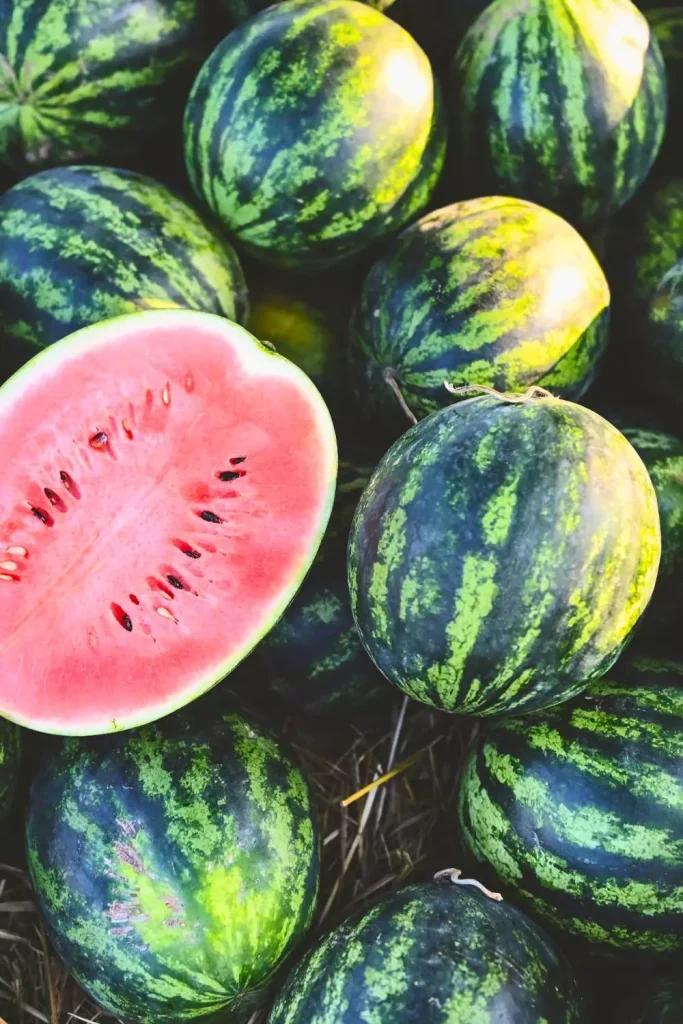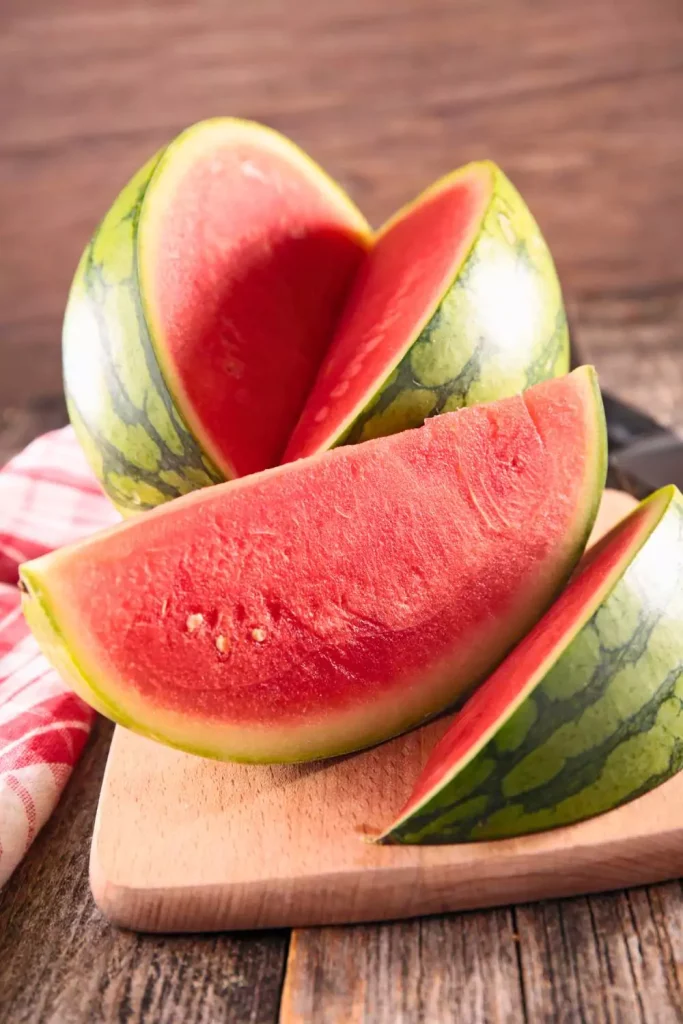You stand in front of a giant pile of watermelons at the grocery store, patting them, turning them around, and hoping you don’t end up with one that tastes like cucumber water.
Picking the perfect watermelon can feel like some secret club handshake no one ever taught us.
But — I’ve been burned (and watered-down) enough times to finally figure it out.
Today, I’m sharing my go-to way to choose a sweet, juicy watermelon every single time. I call it The Four S Method — simple, memorable, and totally doable even if you’re in a rush.
The Four S Method
1. Sheen (Skin Appearance)
First things first: give that melon a good look. You actually don’t want a shiny, glossy one — I know, that feels backwards. A shiny watermelon is usually underripe.

Instead, go for a dull, matte finish.
A melon with this look has had time to ripen in the sun and build up that rich sweetness inside. Shiny equals young; dull equals delicious.
2. Shading (Field or Ground Spot)
Next, flip it over and check its belly. This is where the watermelon sat on the ground, soaking up all that summer sun.
Look for a creamy to dark yellow spot. If the spot is bright yellow or even orange-ish, that’s a great sign — it means the melon ripened right there on the vine.
If it’s white or very pale? Nope. That melon didn’t get to finish its sunbathing session.
3. Sound (Knock Test)
Now for the fun part: knock, tap, or even give it a little drumroll. Yes, people might look at you funny, but trust me — it works.
A deep, hollow “drum” sound means the melon is ripe and ready to party.
If it sounds dull, like a thud, it might be underripe (or overripe and mushy inside — no thank you).
4. Size (Weight Relative to Size)
Finally, pick it up. A good watermelon should feel heavy for its size.
Why? Because a ripe watermelon is about 92% water. The heavier it feels, the juicier it likely is.

If you grab two melons about the same size, always choose the one that feels like it might surprise you and slip right out of your hands — that’s usually the sweet one.
Extra Tips to Consider
- Avoid melons with dents, cracks, or soft spots. These are signs of damage or overripeness.
- Check the rind for mold or weird sticky spots.
- Wash the rind before cutting. Even though you don’t eat the skin, you don’t want to drag bacteria into the flesh with your knife.
Summary: What to Look For & What it Indicates
| Feature | What to Look For | What It Indicates |
|---|---|---|
| Field Spot | Creamy/dark yellow | Ripened on the vine |
| Skin Color | Dark, matte | Ready to eat |
| Webbing | Sugar spots visible | High sugar content |
| Shape | Symmetrical | Even ripeness |
| Weight | Heavy for size | Juicy, high moisture |
| Sound | Deep/hollow on knock | Ripeness & integrity |
| Palm Bounce | Rind springs slightly | Crisp & ripe |
| Stem Color | Brown/dry | Final maturity |
Conclusion
There you have it: The Four S Method, straight from one watermelon-lover to another.
Next time you’re in the produce aisle, you’ll look like a pro — confidently flipping melons, tapping them like you’re in a jazz band, and checking their bellies for that sun-kissed spot.
And when you finally slice into it at home and hear that satisfying crack, you’ll know you picked a winner.
Here’s to sweet, juicy, picnic-perfect watermelon slices all summer long. Enjoy!